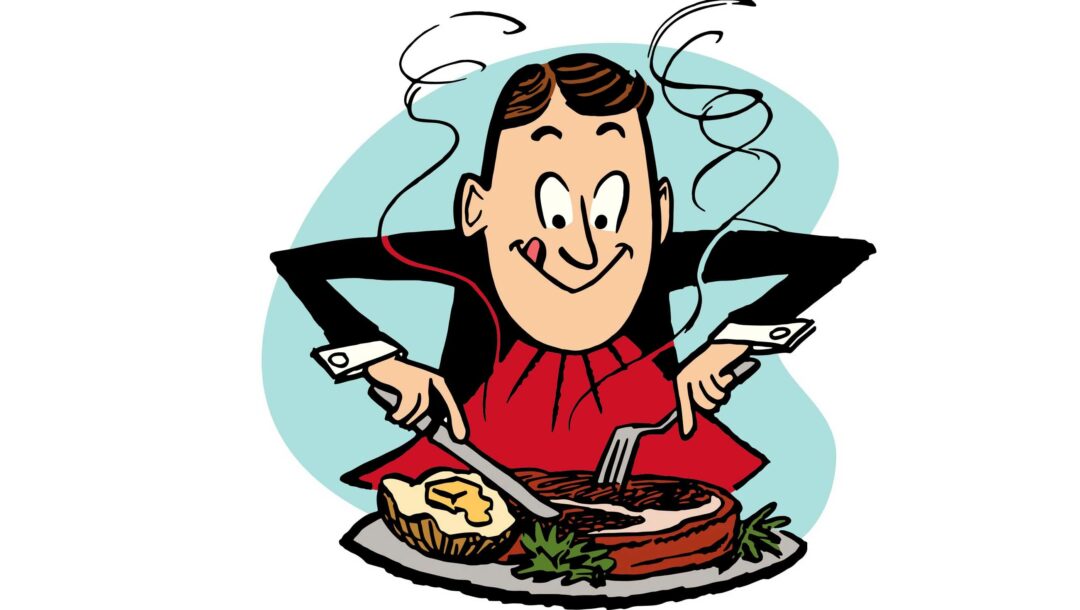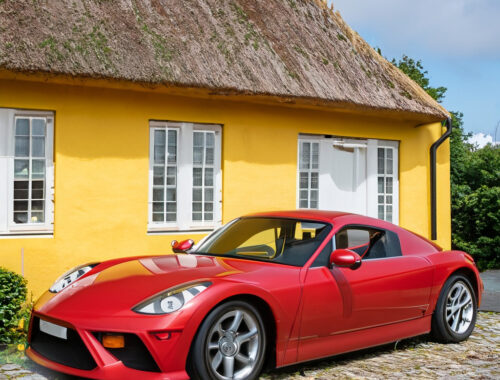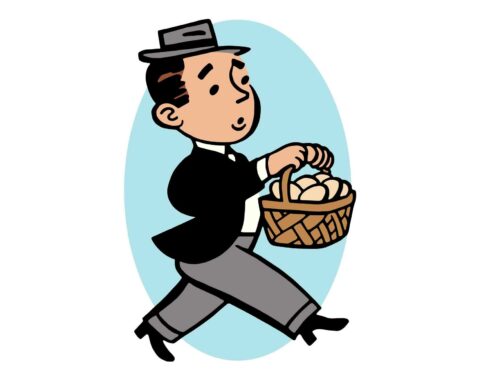Unlike the Norwegians, Swedes, and some Germans, the Danes don’t show their cultural pride by dressing up in 19th century folk costumes. (As a matter of fact, the first time I ever saw a Danish folk costume was at a festival in California.)
Instead, Danes express their cultural pride through food.
When visiting Denmark, you’ll be offered Danish cuisine, and expressing enthusiasm for it will go a long way towards generating harmony with your Danish friends.
Flæskesteg, Denmark’s national dish
The good news is, dining in Denmark offers something for everyone.
If you’re a carnivore, don’t miss the Danish pork dishes, particularly flæskesteg. That’s a crispy, fatty fried pork that’s often called Denmark’s national dish, served with sugary caramelized potatoes and braised red cabbage.
For people who prefer fish, there’s a great selection in this country surrounded by water.
Curried herring and fried plaice are popular, and so are many types of salmon. I like the thinly-sliced smoked salmon served on rye bread with chives, dill, and a bit of chopped red onion. Mmmmm – so good.
For vegans, root vegetables and berries
Vegans can enjoy a great selection of root vegetables, wonderful fresh Danish berries, or the sweet elderflower juice that is sometimes blended with vodka or champagne.
Denmark’s famous thick bread, rugbrød, is vegan-friendly and can be eaten with potatoes on top as a type of smørrebrød, the open-faced sandwiches that are popular at lunchtime.
These sandwiches are particularly popular with builders and other working-class guys. Most shops that sell them open up at 7am, so the guys can buy them on their way to work, and then close at 1pm, when they’re done with lunch.
Licorice is a national passion
In addition, Danes adore cake and candy, in particular salt licorice, which is a national passion.
And make room in your food plan for a real Danish pastry, which are nothing like the ones you get in a plastic bag from the vending machine at home. Made daily with fresh cream and the famous Danish butter, they are worth every calorie.
There’s also an old-fashioned dessert that is a kind of berry porridge called rødgrød med fløde. I’ve never been served this dish in real life, but Danes think it’s hilarious to try to make foreigners pronounce it.
Root vegetables and berries for vegans
Much of your dining in Denmark will probably be lunches at corporate canteens, which all but the very smallest employers provide for their employees.
“Going out for lunch” is rare in Denmark, and some smaller towns may not even have restaurants open at this time of day.
A weekday breakfast at a restaurant is very unusual, although weekend brunch is popular in the big cities.
The Danish restaurant experience
At any time of day, your restaurant experience while dining in Denmark will be different than in many parts of the world, because Denmark has no cheap labor.
Restaurant employees are highly paid and there are fewer of them. In many cafés, you’ll order at the bar, pay in advance, and then pick up your own food when it’s ready.
Higher end restaurants do have servers, but they are not particularly attentive – which is how the Danes like it. They don’t like to be pestered.
Most restaurant kitchens close at 9pm, and unless the place is also a bar, you’re usually expected to be out the door by 10pm.
And you don’t have to tip, although you can always slightly “round up.” Maybe pay 200 kroner for a bill that’s 185 kroner.
Prepare for a long evening
In the Asia or the US or Southern Europe, dining out is often part of a longer evening. You go to dinner and a movie afterwards. Or dinner and out for karaoke and drinks afterwards.
In Denmark, the dinner is the evening.
Whether dining at a friend’s home or in a restaurant, you are expected to sit in one chair for many hours, conversing with the people on both sides of you and polishing off multiple bottles of wine or beer.
When I first arrived in Denmark, I unintentionally offended many people by leaving too early.
I was thinking from the American point of view: I didn’t want to stay too long and make myself a nuisance.
That’s not how the Danes think. Long evenings are something you will have to get used to, along with some Danes’ disconcerting habit of eating a hamburger with a knife and fork.

This is an excerpt from Kay Xander Mellish’s new book, Working with Danes: Tips for Americans/Working with Americans: Tips for Danes. You can see more excerpts by following Kay on LinkedIn.
Read about
Read also:
No food, only stuff to make food: Eating in Denmark
Saving money on food in Denmark




